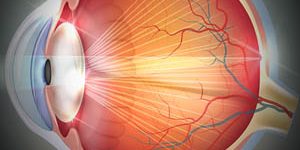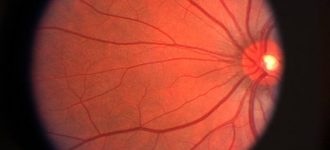Comprehensive Myopia Care for Children
Myopia, or nearsightedness, is a growing concern among children, affecting their ability to see distant objects clearly while close-up vision remains sharp. At Rosato Family Eyecare, we offer tailored myopia management plans to help control its progression and protect your child’s vision.
Why is Myopia Increasing in Children?
Myopia is a common refractive error that often starts in childhood and can worsen, leading to increased dependence on glasses or contact lenses. Also called nearsightedness, myopia is a common vision condition where distant objects appear blurry while close-up objects remain clear. It occurs when the eyeball lengthens, or the cornea curves excessively, causing light to focus in front of the retina instead of directly on it.
Myopia has been on the rise recently, particularly among children. This increase is linked to lifestyle changes, such as too much screen time. Genetics also play a significant role; children with myopic parents are at a higher risk of developing the condition.
Early intervention and regular eye exams are critical in managing myopia, as untreated myopia can lead to severe eye health issues later in life, such as retinal detachment, cataracts, and glaucoma.
Causes and Symptoms of Myopia
Causes: Myopia occurs when the eye’s shape is too long, or the cornea is overly curved, causing light to focus in front of the retina rather than on it. Common causes are associated with environmental factors like the lack of outdoor play.
Symptoms: Children with myopia often struggle to see the board at school, sit too close to the TV, or squint to see distant objects. They may also complain of headaches, eye fatigue, or frequent eye rubbing. If your child shows these symptoms, scheduling an eye exam is essential.
- Mild myopia: -0.25 to -3.00 D
- Moderate myopia: Between -3.00 to -6.00 D
- High myopia: More than -6.00 D
High myopia is particularly concerning as it significantly increases the risk of serious eye conditions in the future, such as glaucoma, cataracts, and retinal detachment.
Myopia Management Prevents Risk of Ocular Disease

Cataracts
The rate of progression of myopia has been linked to the development of cataracts. The higher the level of myopia in a child, the faster the rate cataracts can develop when they get older.

Glaucoma
Glaucoma is when the eye develops an unusually high pressure, where this pressure can damage the optic nerve and cause vision loss. Nearsighted people have a 2-3x greater risk at Glaucoma.

Detached Retina
Levels of myopia also have a correlation to detached retinas. A detached retina is when the retina pulls away from the eyes tissue, often resulting in permanent vision loss.
Myopia Treatment Options at Rosato Family Eyecare
Effective myopia management goes beyond correcting vision; it aims to slow down or stop the progression of myopia to reduce the risk of long-term complications. Here are some of the critical treatment options:
- Orthokeratology (Ortho-K): Ortho-K lenses are gas-permeable lenses worn overnight to gently reshape the cornea. This non-surgical approach provides clear vision during the day without needing glasses or daytime contacts and can help slow myopia progression in children.
- Atropine Eye Drops: Low-dose atropine drops are used to slow myopia progression. Studies have shown that these drops can effectively reduce the rate of myopia development, particularly when combined with other treatments.
- Multifocal Contact Lenses and Glasses: These specially designed lenses help control myopia progression by altering how light enters the eye, reducing the strain that contributes to myopia’s worsening. Multifocal lenses provide clear vision at all distances, offering an excellent option for active children.
- Lifestyle Modifications: Encouraging outdoor activities and limiting screen time can also help manage myopia. Exposure to natural light is believed to play a protective role in eye health, helping slow myopia progression in children.
Eye Care Services Offered At Rosato Family Eyecare
